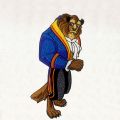Understanding The Wonders Of Terracotta Horse Sculptures

Are you looking to introduce fine art into your home decor? If so, have you heard of terracotta horse sculptures? In China during the Qin Dynasty (221-206 BCE), people had a deep relationship with horses. To them, horses were faithful friends for human beings. In addition, horses played a significant role in then-frequent battles. These are two reasons why people from this period designed and manufactured lifelike and beautiful pottery horses for Emperor Qin Shi Huang, which he also later used to accompany him to the afterlife.
Archaeologists have estimated that over 600 terracotta horses from the Qin Dynasty still exist. These have been found buried in the three pits of the famous Terracotta Army. Among them, over 500 of the pottery horses were designated as pulling horses for the chariots. The remaining horses were used as saddle horses for cavalrymen.
In 1976, an initial batch of terracotta chariot horses was excavated. During the later part of that year, more saddle horses were discovered in a second pit. Although only some of the horses have been excavated, the unearthed pottery horses have provided sound references for anyone who wants to learn about the Qin Dynasty's rich history of war horses and military formation.
How were Terracotta Horse Sculptures Manufactured?
In most cases, each part of the horse was made separately. Once the individual parts were completed, they were assembled into an integrated horse, i.e. attaching the legs to body, the neck to body, and then attaching the head and tail. The second phase involved seaming the separate parts of the horse together with mud. After that, the craftsmen would add detailed carvings and other decorative elements. Thin horsehair on the horse sculpture's back indicates that the horse was baked in a kiln. After that, color would be applied to the sculptures.
When it comes to manufacturing saddle horses, the process is often more complex than making chariot-pulling horses. This is because the saddle horses were more of a decorative job. The elaborate saddle design (e.g. the belt, tassels, etc.) was carved meticulously on the back of the horse. Additionally, the four legs are often angular to clearly showcase the bones, flesh, and skin in high detail.
Terracotta Horses were Modeled After REAL Qin Dynasty War Horses
In ancient times, this type of terracotta horse was regarded as the masterpiece of realism due to their vividly-carved appearance. In addition, these sculptures were more than five feet in height and at least six feet in length. They were very similar to the real war horses of the Qin Dynasty (from 221 - 207 BC).
Not only were the horses life-like in size, they also displayed traits that were seen to be valuable in a horse. The eyes were painted with care to indicate good eyesight and the ears were always manufactured in an upward position to represent alertness. As a show of strength, the nose and mouth were also wide and powerful. Another prominent feature of these sculptures is their teeth. In fact, each pottery horse featured six teeth inside the mouth. This particular detail proves was meant to prove that the horses were in their prime (about three years old).
Like terracotta warriors, these horse sculptures reflect the prosperous and powerful state of Qin with unmatched energy and passion. If you are looking to purchase a Chinese Tang-style Terracotta horse sculpture, look no further than NY Showplace. Contact us today for more information.
Other articles and publications:
Articles and publications of other companies:
- +1 (212) 633-6063
- 40 West 25th Street
- nyshowplace.com/




